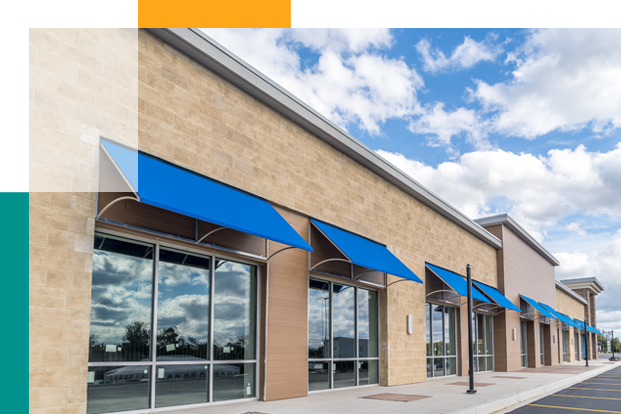Underwriting Requirements for Nursing Home Properties

Real estate investments in nursing properties are gaining momentum as the population aged 65 and older increases, and the demand for long-term care facilities rises. Understanding underwriting requirements for nursing home properties is essential for investors, lenders, and operators alike.
This guide will delve into the key factors underwriters consider, risks involved, frequently asked questions, and insights on financing options, including SBA loans, Section 232 loans, and other loan types relevant to nursing/retirement facilities.
Decoding Underwriting Requirements for Nursing Home Properties
Underwriting is a pivotal process in real estate transactions, especially for nursing home properties, which cater to the health service needs of seniors. It involves evaluating risks and determining the feasibility of a proposed investment. For nursing home properties, underwriting requirements ensure that the facilities provide quality care, maintain financial stability, and comply with regulations set forth by state governments.
Key Factors Underwriters Consider:
Property Age and Condition: As older properties often require substantial rehabilitation, underwriters will assess the nursing home’s condition and potential maintenance costs, which could impact its financial stability.
Location: A facility’s location determines its marketability and occupancy rates. A well-located nursing home will attract more seniors, leading to higher fees and a steady income stream.
Financial Performance: Underwriters will examine income statements, balance sheets, and cash flow projections to gauge the financial health of a nursing home and its ability to provide consistent care.
Management Experience and Track Record: The success of a nursing home depends on its management team’s expertise and reputation. Underwriters look for operators with proven experience in managing similar facilities.
Regulatory Compliance: Nursing homes must adhere to federal, state, and local regulations. Underwriters will evaluate the facility’s compliance history, as well as any pending litigation or enforcement actions.
Risks and Mitigation Strategies for Nursing Property Loan Underwriting
As the population ages, the demand for quality nursing homes continues to skyrocket, making it an enticing investment opportunity. However, like any financial venture, it comes with its fair share of risks. That’s where nursing home loan underwriting comes into play.
Underwriting requirements for nursing home properties help manage risks, such as:
Regulatory Roulette: With ever-changing regulations and compliance requirements, keeping up with the legal landscape is nothing short of a Herculean task. A change in legislation can greatly impact the profitability and viability of a nursing property.
Market Risks: External factors, such as economic downturns and increased competition, can throw a wrench in the best-laid plans. In addition, changing demographics or market conditions can impact occupancy rates and revenue streams.
Operational Risks: Poor management, staff turnover, or inadequate care can jeopardize a nursing home’s reputation and financial stability.
Mitigation Strategies for Nursing Property Loan Underwriting
1. Stay on Top of the Regulatory Game
Don’t let the red tape trip you up! To keep abreast of regulatory changes:
-Subscribe to industry newsletters and updates
-Attend seminars and conferences
-Consult with legal experts
2. Keep a Hawk-eye on Operations
You know what they say: “An ounce of prevention is worth a pound of cure.” To avoid operational snafus:
-Conduct thorough due diligence on potential borrowers and their management teams
-Monitor the property’s performance regularly through on-site visits and reviews
-Require borrowers to provide timely and accurate financial information
3. Adapt to Market Conditions
It’s a dog-eat-dog world out there! To stay ahead of the curve:
-Analyze market trends and demographics
-Diversify your portfolio with different types of nursing properties
-Monitor local and regional competition
4. Safeguard Your Revenue Streams
Don’t put all your eggs in one basket! To protect against reimbursement fluctuations:
-Encourage borrowers to diversify their payer mix
-Assess the financial strength of reimbursement sources
-Keep an eye on policy changes affecting reimbursement rates
FAQs: Answers to Your Nursing Property Loan Underwriting Questions
How do lenders determine loan amounts for nursing home properties?
Lenders consider factors such as property appraised value, borrower creditworthiness, and nursing home cash flow.
What financing options are available for nursing home properties?
Options include traditional bank loans, Small Business Administration (SBA) loans, and HUD-insured Section 232 loans, which specifically cater to nursing facilities, assisted living facilities, and board and care homes.
Do nursing homes participating in Medicare or Medicaid programs face additional underwriting requirements?
Yes, these nursing homes must adhere to specific program guidelines and regulatory compliance.
Can underwriting requirements vary by state or local jurisdiction?
Absolutely! State governments have their regulations, and local jurisdictions may impose additional requirements, especially concerning zoning and land use.
What are the typical loan terms for nursing home property financing?
Loan terms for nursing home properties vary depending on the lender and the specifics of the deal. Generally, terms range from 5 to 25 years, with amortization periods of 20 to 30 years. Interest rates are often based on the prime rate or LIBOR, plus a margin.
What types of collateral are required for nursing home property loans?
Lenders typically require a first lien on the real estate and improvements, as well as a security interest in personal property, such as equipment, furnishings, and accounts receivable.
What is the loan-to-value (LTV) ratio for nursing home property loans?
LTV ratios for nursing home properties can vary, but most lenders require an LTV of 70% to 80%. This means that the loan amount cannot exceed 70% to 80% of the property’s appraised value.
Are there any special underwriting considerations for nursing home properties?
Yes, nursing home properties are subject to additional underwriting scrutiny due to their specialized nature and the regulatory environment in which they operate. Lenders may require an analysis of the facility’s license, historical financial performance, management experience, occupancy rates, and reimbursement sources.
Can I obtain financing for new construction or major renovations of nursing home properties?
Financing for new construction or significant renovations of nursing home properties is available but may require additional due diligence, such as a feasibility study, environmental assessments, and a thorough evaluation of the project’s budget and timeline.
Are bridge loans available for nursing home properties?
Yes, bridge loans can be used to finance the acquisition or refinancing of nursing home properties while permanent financing is being arranged. These loans are typically short-term and carry higher interest rates than long-term financing options.
How can I improve my chances of securing nursing home property financing?
To increase your chances of obtaining nursing home property financing, ensure that you have a solid business plan, a strong management team, a thorough understanding of the local market and competition, and a well-maintained property.
Additionally, be prepared to provide detailed financial information and demonstrate your ability to meet debt service obligations.
If you’re a broker seeking out nursing home financing, or a lender looking to connect with brokers searching for a way to finance their deals, try joining Finance Lobby, the nation’s largest commercial real estate broker-lender financing community.
| Nursing Home Property Content Library | Choose your adventure. |
|---|---|
| Commercial Real Estate Loans for Nursing Homes: Financing the Future of Elder Care | Explore the world of commercial real estate loans tailored for nursing homes and learn how they play a crucial role in financing the future of elder care facilities. |
| What are Assisted Living Facility Loans? | A comprehensive guide on assisted living facility loans, their structure, and the application process to finance and grow assisted living businesses. |
| What are Congregate Care Facility Loans? | Discover the financing options available for congregate care facilities and understand the unique features of these loans designed for this specialized market. |
| What are Alzheimer Care Property Loans? | Learn about Alzheimer care property loans and how these financing solutions cater to the specific needs of properties dedicated to Alzheimer’s and dementia care. |
| The Market Potential of Nursing Home Properties: Demographics, Trends, and Opportunities | An in-depth analysis of the nursing home property market, including the impact of demographic trends, market potential, and emerging opportunities for investors and operators. |
| Underwriting Requirements for Nursing Home Properties | A brief overview and list of FAQs related to underwriting requirements brokers and lenders need to be aware of when involved in a nursing home property transaction. |
| Section 232 Loans for Senior Housing and Healthcare Facilities | Dive into the specifics of Section 232 loans, a government-backed financing option for senior housing and healthcare facilities, and learn how they can help support the growing demand for these services. |
What is a Section 223 loan and what purpose does it serve?
A Section 223 loan, also known as a Section 223(f) loan, is a Federal Housing Administration (FHA) insured mortgage program designed to finance the purchase, refinance, or rehabilitation of healthcare facilities, such as nursing homes, assisted living facilities, and intermediate care facilities.
These loans provide borrowers with long-term, fixed-rate financing options and aim to promote the development and improvement of healthcare properties.
What are the eligibility requirements for a Section 223 loan?
To be eligible for a Section 223 loan, the property must meet the following criteria:
-The facility must be licensed and regulated by the appropriate state agency
-The property must comply with all state and federal regulations
-The facility must demonstrate a need for the loan, such as improving the quality of care or addressing market demand
-The borrower must have a proven track record of successful operation and management of healthcare facilities
What are the terms and conditions of Section 223 loans?
Section 223 loans typically offer terms up to 35 years or 75% of the property’s remaining economic life, whichever is less. The loans are fully amortizing and have fixed interest rates.
The maximum loan-to-value (LTV) ratio is 85% for market-rate properties and 90% for non-profit properties. Loan amounts are determined based on the lesser of the LTV ratio or the debt service coverage ratio.
Can I use a Section 223 loan for new construction projects?
No, Section 223 loans are intended for the purchase, refinance, or rehabilitation of existing healthcare facilities. If you are looking to finance the construction of a new healthcare facility, you may want to consider a Section 232 loan, which is specifically designed for this purpose.
What is the application process for a Section 223 loan?
The application process for a Section 223 loan involves several steps, including:
-Preliminary discussions with an FHA-approved lender to determine eligibility and loan terms
-Submission of a pre-application package, including a market study, architectural plans, and financial projections
-Review and approval of the pre-application by the Department of Housing and Urban Development (HUD)
-Submission of a full application, including detailed documentation of the property’s financial and operational history
-HUD review and issuance of a firm commitment for the loan
-Closing of the loan and disbursement of funds
Underwriting Requirements for Nursing Properties: The Bottom Line
Investing in nursing home properties requires a deep understanding of underwriting requirements, as well as the long-term care landscape.
By considering key factors such as property age, location, financial performance, management experience, and regulatory compliance, investors and operators can better navigate the risks and ensure quality care.



